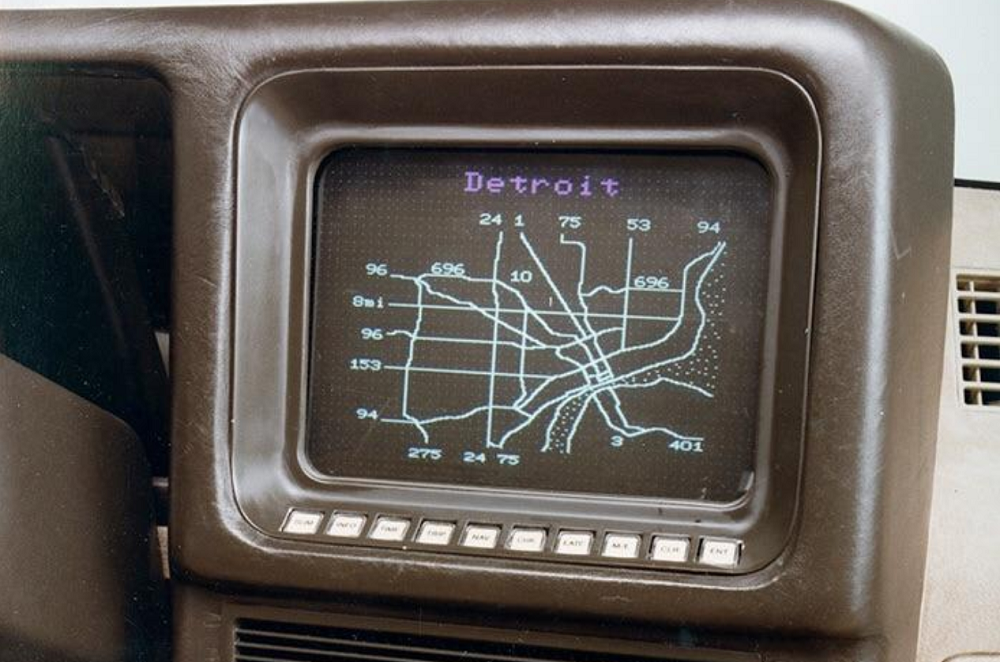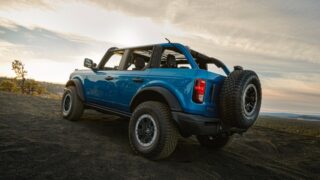Ford’s 1983 Tripmonitor Nav System was Totally Tubular
A full 35 years ago, Ford paved the way for today’s GPS navigation systems with the ahead-of-its-time Tripmonitor.
One thing you’re undoubtedly aware of is the fact that Ford has long remained at the forefront of vehicle technology. It’s one of the main ingredients for their continued success, of course. But what you may not know is that Ford was also an early pioneer for automotive navigation systems, something we’ve come to expect in our vehicles today. And while we think of navigation as a relatively modern invention, its roots were planted decades ago.
The idea of a modern navigator can actually be traced back to the 1920s, in fact. An American by the name of John J. Bovy received a patent for a dashboard-mounted navigation aid way back in 1921. That system used maps printed on scrolls. In 1927, a British company even invented a scroll-based navigation watch known as the Plus Four Wristlet Route Indicator.
But it wasn’t until 1930 when we saw the very first in-car navigation system, the Iter-Auto. The brainchild of an Italian firm mounted to a car’s dashboard and used preprinted route scrolls to help drivers reach their desired destination. The device hooked up to the car’s speedometer for accurate tracking. And it even marked things like hotels and bridges, just like today’s GPS systems.
However, not many folks owned cars back in the ’30s. Thus, the breakthrough technology remained relegated to the back burner until 1983. It was then that Ford shocked the world by introducing the Lincoln Continental 100 Concept. Much like Doc Brown‘s DeLorean, this exciting new concept erupted onto the scene seemingly from thin air. Packing more technology than we’d ever seen in one vehicle.
The centerpiece of this concept was, of course, Ford’s new Tripmonitor system. “In the future, motorists may not have to rely on their own sense of direction,” promised the Desert Sun in June of 1983. “Called a Tripmonitor, it employs a nine-inch, diagonal, eight-color cathode ray tube mounted in the middle of the instrument panel. Push a button and a map appears on the screen with the car’s location.”
Sounds simple enough. But remember, this is 1983. The same year we first saw the Super Mario Bros. and Fraggle Rock. The same year Microsoft Word came out, and we still don’t know how to use that. Thus, the words of Ford engineer Mark Jarvis almost sounded Greek at the time.
“The car is tracked by a satellite which feeds the car’s latitude and longitude coordinates to the CRT which translates them to a point on the map,” he said (probably with a giant pocket protector protruding from his super clean white shirt). “The point moves as the car moves and is accurate to within 400 meters anywhere in the world.”
Of course, none of this would be possible if not for the invention of the “Transit” GPS system. Initially created for operational use, mostly by the U.S. Navy, Transit slowly transitioned to civilian applications as well. The first satellite-based geopositioning system analyzed radio signals to track the movement of receiver-equipped objects. It was a criminally simple yet ultimately revolutionary idea.
The U.S. government restricted this exciting new GPS technology to military use until 1983, however. Thus, Ford’s Tripmonitor was the very first automotive application to incorporate what would eventually become a common feature we take for granted today. Utilizing a system diagram from the “Mobile Information Systems Impact Study” by the Ontario Ministry of Transportation in August of 1988, we can get a simpler idea of how this totally tubular system worked.
Tripmonitor utilized a magnetic compass and a series of sensors to determine the car’s location. Once calibration was completed, software was used to compensate for the vehicle’s magnetic properties in regards to compass readings. There were obvious issues with using a magnetic compass, however. Mainly because there’s just no reliable way to filter out the effects of things like nearby transformers on GPS systems.
Ford, however, has made great progress since those early days of navigation. Today, Sync 3 offers up pin point accuracy thanks to a host of changes, including using wheel rotation to calculate distance traveled. But it also brings to realization many of the features we first saw with Tripmonitor. Including voice recognition and seamless integration with a host of other technological features.
Today, it’s amazing to think that what we consider cutting edge technology has essentially been around, at least in idea form, since the early ’80s. We just had to wait for technology to advance to the point where we could actually implement those ideas. Just imagine if Tripmonitor had been viable back then. If nothing else, it sure would have made an awesome addition to Ford pickups of that era!
Join the Ford Truck Enthusiasts forums now!









